MITKUNSTZENTRALE and SATELLIT (2024) +
two places we work together and
initiated together to deal with...
...Collaborative work:
mitkunstzentrale.de
...Community work:
satellit.info
BRITZENALE (2021) +
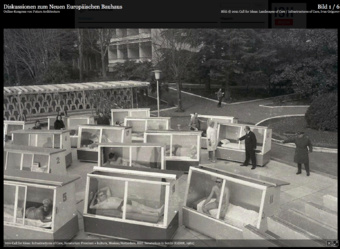









6.-8.August 2021
Die Berlin Britzenale ist ein interdisziplinäres Ausstellungsprojekt inmitten einer Kleingartenanlage im Neuköllner Stadtteil Britz. Auf der Anlage mit 62 Parzellen, die zwischen 200 und 400 qm groß sind, untersucht die ‘Biennale von Britz’ dieses räumlich und sozial für Berlin kennzeichnende Modell und öffnet es für ein Wochenende der Öffentlichkeit.
Kleingärten bilden in Berlin eine historisch gewachsene, kulturell, ökologisch und sozial bedeutende Ressource. Das gestiegene Umweltbewusstsein, nachhaltiges Konsum- und Ernährungsverhalten sowie die andauernde Pandemie haben die ‘Schrebergärten’ und das Urban Gardening höchst attraktiv gemacht.
Das Ausstellungsprojekt Berlin Britzenale mit seinen wechselnden Themenschwerpunkten möchte eine bewusste Öffnung der Kleingärten für die Allgemeinheit erreichen und den Dialog und Diskurs zwischen Kunst und Kleingarten ermöglichen.
Über das Flanieren durch die Anlage eröffnet sich der Ort mit seinen kleinen Einheiten in seiner Gesamtheit und lässt Herangehensweisen, Zeitschichten und verschiedene Gestaltungsansätze bewusst betrachten, was in der Regel - wenn überhaupt - nur flüchtig geschieht. Für die künstlerische Umsetzung gehen die Künstler*innen für die dritte Ausgabe der Berlin Britzenale nun einen Dialog mit den Pächter*innen und ihren jeweiligen Gärten ein.
Die beteiligten Künstler*innen 2021 waren:
Art Ashram (Kollektiv), Marina Camargo, Bogomir Ecker, Erik Göngrich, Vanessa Henn, Deborah Jeromin, Kathrin Köster & Yala Juchmann, André Linpinsel, Pätzug / Hertweck, stay hungry (Michel Aniol, Anaïs Edely, János Fodor & Meike Kuhnert), Matthias Schamp, Sonya Schönberger, Pola Sieverding, Stefania Smolkina, 44flavours (Sebastian Bagge und Julio Rölle) und Alvaro Urbano.
ORIGINAL (2020) +
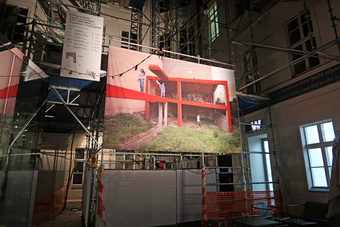

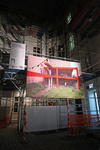






First it was just a found situation with a concrete structure that occupied a piece of land in the center of ROME.
Then the owner cleaned the field from the green and the sculptural character of that structure appeared.
This was reason enough to build a 1:5 Model of the Structure and name it ORIGINAL.
You could read it as a inverse Ready made.
On the invitation poster for the show at leporello the "modern studiolo" was manifested.
It was all these steps before we got the allowance to really paint the house red and the letters up.
The photo of that ready made sculpture was part of a show in the romantic garden of villa massmo in Rome.
Back in Berlin the Photo was exhibited on the building site scaffolding in the courtyard of KW.
There it was put back in the context of city-transformation and it almost got a proof of evidence for the manifesto of "The unfinished" of alterazione video where they manifested that all these unfinished concrete ruins in italy are THE (one and only) real style that architecture in italy produced in the last 100 years. The contemporary ruin like the old roman ruin.
All you touch and all you see / is all your life will ever be / RUN RABBIT RUN / Dig that hole, forget the sun. (2020) +
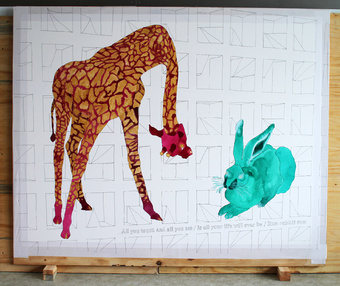



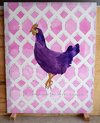
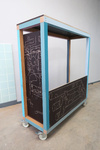
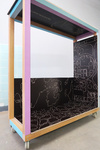

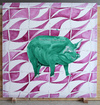
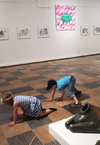

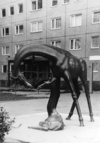
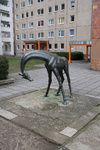

Urbane Kommentare
mit
Sibylle Bergemann, Herbert Bergmann-Hannak, Christian Borchert, Jan Brokof, Herdegen Fehlhaber, Günther Friedrich, Erik Göngrich, Joachim Jansong, Thomas Kläber, Konrad Knebel, Max Lingner, Otto Möhwald, Gerhard Kurt Müller, Franziska Neubert, Uwe Pfeifer, Stefan Plenkers, Ulf Raecke, Evelyn Richter, Ute Richter, Erik Seidel, Oskar Erich Stephan, Susanne Theumer, Michael Voll, Walter Womacka, Ulrich Wüst, Rainer Zille sowie Kooperationsmodule der Sommerschule Viadrinicum / Europa-Universität Viadrina
Dauer: Samstag 13.6. bis Sonntag 30.8.2020
Geöffnet: dienstags bis sonntags von 11 bis 17 Uhr.
Die Ausstellung wird ohne Vernissage eröffnet.
Brandenburgisches Landesmuseum für moderne Kunst
Rathaushalle Marktplatz 1, 15230 Frankfurt (Oder)
Kasse +49 335 283 961 83
DOUBLE ELEGANCE (2019) +
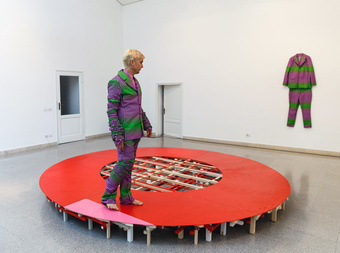









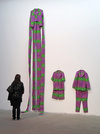
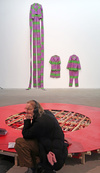
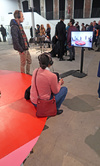
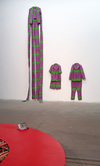
Material:
Real Wax Fabric made by sunbelt from Ghana 2018
Stolen by vlisco / Holland from Java in 1850
Imported to Africa by vlisco around 1880
Produced by Ghana Textiles Printing Company Limited since 1960
Today also printed by hittarget in China
Renamed as Fancy Prints From China.
Bought 2019 at New Esquilino Market in Rome
Suit:
Rita Quinto, Rome, 2019
Stage:
Erik Göngrich, 2019
Music:
Luis da Silva, Embrace, 2019
Performance / 5min. / 13.6.1919 / vimeo.com/344292404
50 Jahre Ruhender Verkehr: PLAKAT (2019) +
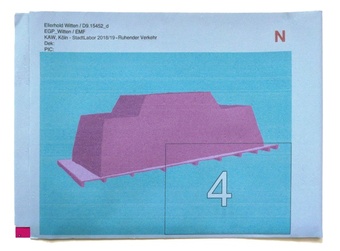









Präsentation einer dreiteiligen Plakatserie von Erik Göngrich im im April - Mai- Juni 2019 an 15 Standorten im Kölner Stadtraum.
Eine Aktion von Uschi Huber und Boris Sieverts mit Erik Göngrich im Rahmen von StadtLabor.
Fotos der Plakataktion: StadtLabor 2018/19
Underchallenged Public Space - Unterforderter Aussenraum (2019) +
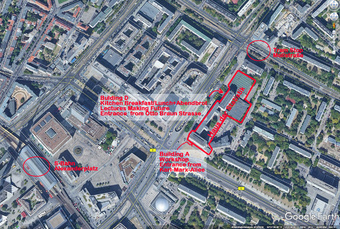



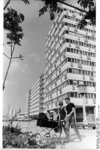
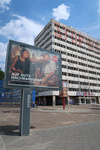
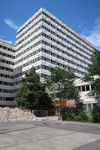






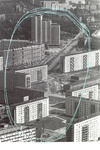
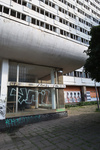
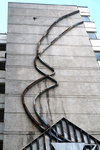
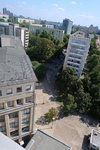
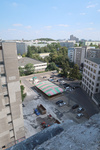

Workshop with students from Bergen Architecture School
Held by Erik Göngrich from 2.-13.Sept. 2019 im Haus der Statistik, Berlin
The workshop will turn around:
Art in Cityspaces – Cityspaces in Architecture – Architecture in Art
Cityspace as Art – Art as Architecture – Architecture as cityspace
We are looking at:
The old Landsberger Alleethat nearly vanishes in the modern city grid. We will follow the traces of that street from Haus der Statistik to Platz der Vereinten Nationen. We will find out:
How is the space used? And where? Are there corners you like to react on? How is it possible to condense this under-challenged modern public space? Do you think a modern city is creating modern art? Where would you like to react artistically and where architecturally? Would you like to develop a house or a sculpture for a specific place? More generally speaking: What could be an intervention for you?
We will work with drawings:
Every day a drawing
Drawings as sculptures in the public realm
Drawings to sharpen a conception
Drawings and texts as installations in space that are tangible Situations for specific places
Drawing as communication tool without talking
Drawing as a document
Drawing as a signifier
Drawings as body extensions, intellectually and physically
Graphic Recording as representation of spaces and attitudes
Drawings for Demonstrations and as performativity Design
…
In general I would like to work with / focus on drawings that will be accompanied by photos, texts, models, installations, music, performance, cooking, sculpture, walks…..
Our common display will be:
For the final presentation each person will use a wooden door panel (that are originally used in of Haus der Statistik) to present their drawings and ideas.
Erik Göngrich
Berlin 19.8.19
MARX-ENGELS-FORUM – JA! (2017) +
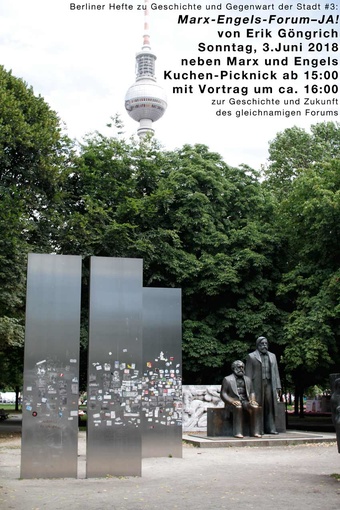
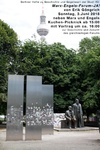
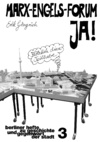

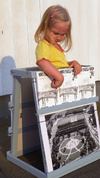
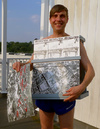
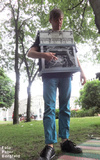


Publikationen in Aktion und/oder
Publikationen als das Herstellen von Öffentlichkeit
MARX-ENGELS-FORUM – JA!
Berliner Hefte zu Geschichte und Gegenwart #3
Am 4. April 2016 trafen sich rund 40 Personen anlässlich des 30-jährigen Gedenkens an die Errichtung des Marx-Engels-Forums in Berlin-Mitte. Die meisten von ihnen waren auch schon 1986 bei dessen Einweihung anwesend – gelebte Geschichte an einem Ort, dem immer wieder seine Bedeutung abgesprochen wird. In den 1950er/60er Jahren wurde die Fläche für ein Hochhaus der DDR-Regierung freigehalten, das nie gebaut wurde. Die Planung des Marx-Engels-Forums in seiner parkähnlichen Form begann 1973. Nach 1989 wurde der Ort zunächst ohne Veränderungen hingenommen, vielleicht gar vergessen. Heute stehen sich zwei Lager gegenüber: Auf der einen Seite die ‚Historischen’ mit ihrem Bestreben einer parzellengenauen Rekonstruktion des mittelalterlichen Stadtgrundrisses. So als wären sie vom Schlossbaufieber angesteckt, das sich am gegenüberliegenden Spreeufer ausbreitet. Auf der anderen Seite die ‚Modernen’, welche die architektonischen und städtebaulichen Zeugnisse der DDR-Moderne bewahren und weiterentwickeln wollen. Das Marx-Engels-Forum ist ein Erinnerungsort par excellence zwischen Fernsehturm und zukünftigem Humboldt-Forum. Seit 2010 durch die Baumaßnahmen für die U-Bahnlinie 5 kaum zugänglich, soll dieser ab 2019 als städtischer Grünraum aufgewertet werden. Die Geschichte des Ortes und seine wiederholten Neuverhandlungen, auch im Rahmen des Beteiligungsverfahrens von 2015, werden in diesem Heft zeichnerisch zur Diskussion gestellt: Wie lässt sich ein offenes Gelände – JA, genau darum geht es – an dieser zentralen Stelle erhalten und mit dem Ziel einer ständig wechselnden Nutzung gestalten? Um die Freiheit in der Aneignung des Forums zu ermöglichen, müsste sie in der Gestaltung des öffentlichen Raumes eingeschrieben sein. Was liegt da näher, als den Stadtraum ausgehend von der Kunst über die physische Präsenz verschiedener skulpturaler Setzungen zu entwickeln. Schließlich waren die Skulpturen zuerst da – nicht nur Marx und Engels!
128 Seiten, zahlr. Abbildungen
Februar 2017
e-pub: 3,99€
www.EECLECTIC.de
print: 7€
ISBN 978-3-946674-02-32
http://www.berlinerhefte.de/
LIEU DE __ Une promenade comme intervention et activation de mémoire et d’imaginaire (2017) +
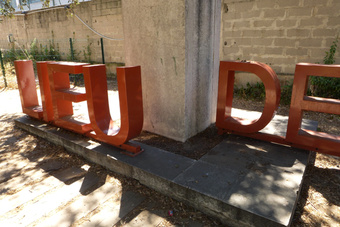










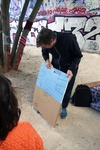

Connecter le Frac et la Friche La Belle De Mai par un parcours pédestre proposé par les artistes Hendrik Sturm et Erik Göngrich.
Durant la traversée du quatre kilomètres nous croisons des jardins nouveaux et anciens, des sculptures anonymes ou des commandes, des bâtiments récents vieillis prématurément, des places sans bancs, les rues d’un futur « Quartier Libre » et un « Lieu de Mémoire » inaccessible.
Nous marchons au bord de la ville historique, à la recherche d’images et d’actions.
Parcours les samedi 16 et dimanche 17 septembre 2017.
Eine Wanderung vom FRAC zur Friche La Belle De Mai mit den Künstlern Hendrik Sturm und Erik Göngrich
Beim Durchqueren der vier Kilometer begegneten wir neuen und alten Gärten, anonymen Skulpturen oder Befehlen, neuen Bauten, die vorzeitig gealtert sind, Plätzen ohne Bänke, Straßen eines zukünftigen « Quartier Libre » (dt. Freies Viertel) und eines unzugänglichen « Lieu de Mémoire » (dt. Erinnerungsort). Wir befanden uns am Rande der historischen Stadt, auf der Suche nach Bildern und Handlungen.
Der Spaziergang fand am Samstag, den 16., und Sonntag, den 17. September statt.
Räuber und Gendarm - Vornamen 2015 (2016) +
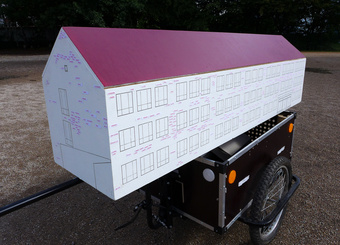









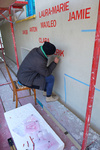
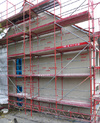







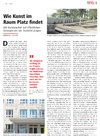
Räuber und Gendarm – Vornamen 2015 ist als Kunst am Bau-Projekt Teil der Maßnahmen zur Erweiterung und Modernisierung der Karlshorster Grundschule in Berlin-Lichtenberg. In einem nicht offenen Kunstwettbewerb wurde das Projekt aus fünf eingereichten Entwürfen zur Umsetzung ausgewählt.
Die Vornamen aller Schülerinnen und Schüler wurden mit roter Farbe in gleicher Größe und Typografie auf die Fassade aufgebracht. Dafür wählten 437 Schüler*innen auf einem Modell der Schule den Ort aus, an dem sie ihren Vornamen sehen wollten.
Eine Publikation bildet den zweiten Teil des Projektes. Alle Schüler*innen der Karlshorster Grundschule des Jahrgangs 2015 erhielten ein Exemplar dieser Publikation.
Karin Billanitsch im Gespräch mit Erik Göngrich - juni2017
Sie haben als Künstler an der Grundschule Karlshorst im Berliner Bezirk Lichtenberg eine Fassadenarbeit gestaltet. Die Namen der Kinder eines Jahrgangs sind an der Fassade angebracht. Was drückt diese Kunst am Bau aus?
Göngrich: Ich konnte 437 Kinder eines Jahrgangs aus 2015 zusammenbringen, deren Vornamen sich auf der Fassade finden. Diese Namen zeigen uns viel über die Herkunft und das soziale und gesellschaftliche Umfeld. Es ist eine homogene Schülerstruktur der Mittelklasse, die diese Schule besucht, ganz wenige Namen weisen in eine andere Kultur. Ich sehe in der Arbeit auch einen Identifikationsfaktor mit der eigenen Schule. Ich weiß, dass Schüler ihre Eltern dorthin geführt haben, um ihre Namen zu zeigen. Das hat sehr gut funktioniert, glaube ich.
Ist die Arbeit abgeschlossen?
Die Fassadengestaltung stellt für die Zukunft Fragen: Wenn die alte Farbe mal in 15 Jahren abblättert und erneuert werden müsste, kann man entscheiden, ob das Kunstwerk erneuert, wiederholt oder erweitert wird. Zum Beispiel wäre denkbar, die Schüler des Jahrgangs 2015 und 2035 in verschiedenen Farben anzubringen. Noch stellt sich die Frage nicht. Was ich nicht weiß, ist, ob die unterste Ebene vielleicht mit einem Grafitti belegt ist, jemand seitdem seinen Namen mit einer Spraydose dazugefügt hat. Das müsste man sich mal anschauen.
Warum macht Kunst am Bau speziell an einer Schule für Sie besonders Sinn?
Ich denke hier nur mal an meine eigene Schulzeit zurück, meine Herkunft, meine Umgebung: Was waren die Platzhalter an Gebäuden oder Skulpturen oder Bildern oder Reliefs, die einen mit einem Ort und dessen Geschichte verbunden haben? Manchmal waren es auch ein Baum oder einfach eine Türklinke an der Schule. Das führt zu der spannenden Frage für mich: Durch was wird unsere Gesellschaft gegliedert und am Laufen gehalten? Durch was entstehen Entscheidungen? Wie beziehen wir uns auf unsere Geschichte? Das steckt hier alles mit drin.
Es geht also um Gebäude im Leben eines Menschen, Orte, wo Einschneidendes passiert, Wegmarken gesetzt werden?
Ja, zum Beispiel auch Krankenhäuser. Es geht bei Kunst am Bau darum, sich an den sozialen und örtlichen Gegebenheiten vor Ort zu orientieren. Fehlt es, dass sie mit den Menschen verbunden ist, dann wirkt die Kunst oft aufgesetzt. Wenn man an Kunst am Bau denkt, fallen einem schnell Versicherungen oder Bürogebäude ein. Das ist aber oft Kunst, die kaum öffentlich zugänglich ist. Oder nehmen Sie den Bundesnachrichtendienst hier in Berlin: Die kann Werke man von außen sehen, aber nicht als Kunstwerk erleben.
Wie wichtig sind partizipative Elemente für Sie bei der künstlerischen Arbeit?
Das ist ja relativ neu. Es wird zwar oft in Wettbewerben gewünscht, aber das wirklich umzusetzen, ist nicht einfach. Es wird nicht einfach so hingestellt nach dem Willen des Bauherren. Bei der Schule hatte ich Glück, dass die Kunstlehrerin extrem offen war und die Kinder super mitgemacht haben. Zur Zeit biete ich künstlerische Führungen auf dem IGA-Gelände zum Thema „Subbotnik“ an. Der auf Bau- und Trümmerschutt begründete Kienberg wurde ja in der DDR im Rahmen von „Subbotnik“-Aktionen bepflanzt. Das hat ja auch mit der Frage der Teilhabe zu tun. In diesem Fall sieht man, wie sich der Grünraum in Marzahn-Hellersdorf durch die Aktionen der Bewohnerinnen und Bewohner entwickelt hat.
„Räuber und Gendarm – Vornamen 2015“ – wie die Arbeit heißt – ist ein Kunst-am-Bau-Projekt mit einem Volumen von etwas mehr als 20.000 Euro. Wie beurteilen Sie als Künstler, der in Berlin lebt und arbeitet, die Förderlandschaft vor Ort?
Ich denke man könnte die Förderung bei Kunst am Bau durchaus vergrößern. Mancherorts gibt es auch eine Haltung, Gelder bewusst nicht abzurufen. Lichtenberg ist ein absoluter Vorzeigebezirk, der versucht, auch in kleinem Maßstab Gelder einzusetzen und nicht so bekannte Künstler zum Zuge kommen zu lassen. Bei größeren Projekten über 200.000 Euro ist das Verfahren aufwendiger und ist es ein großer Aufwand überhaupt in die erste Runde zu kommen und sich in der zweiten Runde zu behaupten. Man arbeitet zum Teil fast Jahr daran und bekommt, wenn es nicht klappt, 1.500 Euro in der zweiten Runde. Viele Künstler können sich das gar nicht leisten.
In die Zukunft gedacht könnte man mit den Geldern andere Formen entwickeln, wie man Kunst am Bau für ein bestimmtes Gebiet nutzt, insbesondere bei großen Neubauprojekten. Ich möchte noch einmal das Beispiel Bundesnachrichtendienst bringen: Da wurden die Kunstwerke einfach im Innenhof abgeladen. Es gibt ja noch andere Wege, mit so etwas umzugehen. Da sehe ich ein Entwicklungsgebiet. Beispiel München oder auch Wien, wo man für Kunst im öffentlichen Raum Kuratoren hat, die sich um ein bestimmtes Gebiet kümmern. Das was der BBK (Berufsverband Bildender Künstler) mit der Kommission, in der ich ja auch bin, ist genau der Versuch, dass kleinere Wettbewerbe erfolgreich durchgeführt werden und eben auch Künstler einzuladen, die aufgrund ihrer Arbeit passen und so auch einmal zum Zuge kommen.
Machen wir einen Exkurs weg von Karlshorst zu aktuellen Projekten, an denen Sie arbeiten. An welchen Wettbewerben nehmen Sie teil?
Ich mache gerade den Rosa-Luxemburg-Wettbewerb mit, der mich im Kopf seit dem letzten Herbst belegt und nun in die zweite Phase gegangen ist. Das beschäftigt mich enorm: Was ist Kunst, was ist Repräsentation der Institution – all diese Fragen sind sehr spannend. Hier gelangt man an Grenzen – oder auch nicht, man erweitert ja auch sein eigenes Gebiet.
Dann gibt es noch anderes, die demnächst kommen werden. Gerade läuft die erste Abgabe für das Humboldt Forum – Berliner Schloss. Man muss jetzt für sich klären, ob man mitmacht. Die ersten beiden Wettbewerbe laufen gerade, es wird weitere geben. Das ist eine ganz andere Nummer, es ist ja ein Repräsentationsgebäude. Hier gibt es viele Dinge zu klären, bevor man überhaupt auf Ideen kommt. Solche Wettbewerbe sind komplett offen, man kann alles machen. Man kann das Projekt dekorativ angehen – dekorativ meine ich hier positiv. Für mich ist dekorativ manchmal besser als zu viel Kritik, es ist offener. Es kann auch in Kritik münden, etwa indem das Dekorative überhöht wird und im Glückfall ein anderer Blick auf die Dinge entsteht.
Alles um das Schloss herum mache ich seit mehr als zehn Jahren mit, weil ich finde, es ist wichtig, da mitzumachen, Zeichen zu setzen, dass man eine Haltung dazu hat. Ob man dann zum Zuge kommt – das kann man nur hoffen.
Was muss gute Kunst im öffentlichen Raum leisten können?
Schwierige Frage. Gute Kunst im öffentlichen Raum muss für mich persönlich so sein, dass sie Diskussionen auslöst. Und dass sie einen historischen Bezug hat, der so aufgearbeitet wird, dass er für uns auch eine Bedeutung hat, dass es sich lohnt, sich damit auseinanderzusetzen. Gute Kunst kann aber auch heutzutage eine Auseinandersetzung mit einem Ort und dessen Nutzern sein, und etwas reflektieren, was sonst so nicht zugänglich ist. So verstehe ich etwa die Namen an der Schule.
VOUS ETES ICI! Et ailleurs! (2015) +
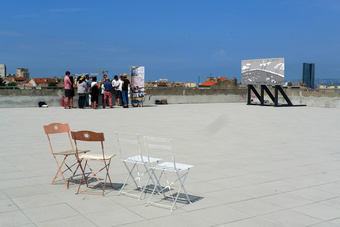




















- In Marseille und gleichzeitig in Berlin!
Stadtbilddiskurse während vier verschiedenen Spaziergängen am 13.+14.Juni 2015
auf dem Dach der Friche Belle de Mai in Marseille
von Erik Göngrich und Hendrik Sturm
Drei ausgewählte Blicke wurden kommentiert und erweitert.
Drei Marseiller „Bildausschnitte“ wurden beschrieben und ihn in Bezug zu Berlin gesetzt:
Eine Marseiller Klosteranlage mit dem Berliner Stadtschloss. Super Marseille mit der Autobahnüberbauung Schlangenbader Straße. Wohnungsbau im Norden MArseilles mit dem Zweiten Bauabschnitt Karl-Marx-Allee am Alexanderplatz. Die Avenue Alemand in der Belle de Mai mit der Turmstrasse in Moabit. ...
Geschichten und Informationen wurden erzählt die vor Ort nicht direkt sichtbar sind. Verschiedene postkartengroße Fotografien wurden an die Teilnehmer verteilt. Fotografische Siebdrucke erklärten Situationen in Berlin. Die Superstudio-Postkartenserie aus Hellersdorf/Marzahn wurden verteilt. Ein ca. 80x50x200cm großes Holzdisplay auf einem Fahrradanhänger wurde gebaut an dem Siebdrucke, Zeichnungen und Fotografien befestigt wurden.
Fragen die uns interessieren:
Was nimmt man von dem Raum wahr und was projiziert man drauf?
Welche Geschichten sind sichtbar und welche muss man in Erinnerung rufen?
Gibt es Bilder von Marseille oder Berlin die diese Stadt repräsentieren?
Sozusagen Stadtbilder die für die jeweilige Stadt stehen?
Oder muss man sich jedes dieser Bilder wieder mit 10 weiteren kommentiert vorstellen?
„Oh, bei mir Zuhause ist das aber so und so...!“ – wie lässt sich über dieses „Zuhause“ an einem Ort reden an dem dieses nicht vorhanden ist?
Wo sind deine Vorlieben bei der Entwicklung einer Stadt? Was sind misslungene Beispiele?
Ausstellung was heißt das heute?
vielen dank auch an: hinterher.com
In Moabit bei der Arbeit und gleichzeitig beim Schlossneubau und in Marzahn/Hellersdorf. (2015) +
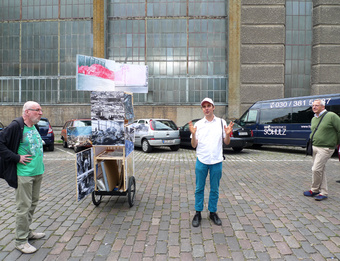

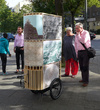

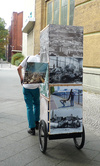
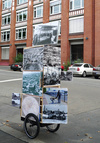
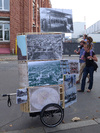








Stadtführung mit Bilderkarren
Einmal um das Siemensgelände im Westen Moabits
Am Sonntag 13.Sept. 2015 um 15:00
Treffpunkt: AEG-Turbinenhalle von Behrens in der Huttenstraße Ecke Berlichingenstraße
Ausgehend von der städtebaulichen Situation am Industriestandort Moabit und seiner Mischung aus Gründerzeit-Wohnblöcken und Großbauten, wie der Turbinenhalle von Peter Behrens, richtet Erik Göngrich seinen Blick auf ganz Berlin. Anhand von Bildern reflektiert er das Thema Arbeit in der Architekturmoderne des 20. Jahrhunderts in Ost- und West-Berlin und widmet sich urbanen Veränderungsprozessen bis hin zu der neuralgischen Frage: Welche Schlösser braucht man für internationale Kulturen?
Free Berlin (2015) +
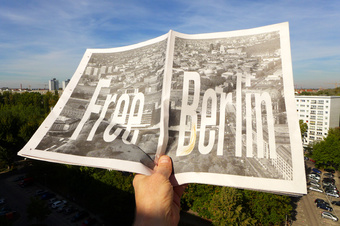




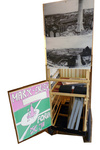
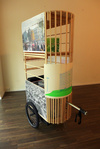


Präsentation der ersten beiden
Free Berlin magazine vom July und Sept. 2015
publiziert von Errant Bodies Press
am
Samstag den 10.10.2015 - 19:00
bei
Errant Bodies, Kollwitzstrasse 97, 10435 Berlin
www.errantbodies.org
Free Berlin - A free newspaper on the politics of creativity
The publication aims to contend with current debates on the topic of "the creative city" and specifically how the artist contributes to the cultural value of Berlin. With the steady intensification of "the Berlin phenomenon" this cultural value both fuels an extremely dynamic social milieu while lending to a political and urban apparatus geared toward economic development. The instrumentalization of creativity as a currency in the city of Berlin (and elsewhere) thus raises complex and important questions.
The publication considers these current debates around city politics and how creative practice may negotiate (or not) the social and economic consequences. How to deal with such a situation? Is there a way to "produce" without being complicit in the capitalization of creative expression? What type of critical position is possible? Are there possibilities for strategies of resistance, re-appropriation or withdrawal? What responsibilities do the artists have for the city? And importantly, what are the historical agents that have made Berlin possible as a place of creative action?
By questioning the ways in which the artist performs as part of the creative city, the publication is envisioned as a creative base for diverse perspectives, and in support of dissident imaginations. It assembles together articles, documents and works from practitioners and thinkers working in Berlin, to bring forward reflections, historical references, and creative interventions.
Sagen wir mal es geht ums Fressen Berlin (2014) +
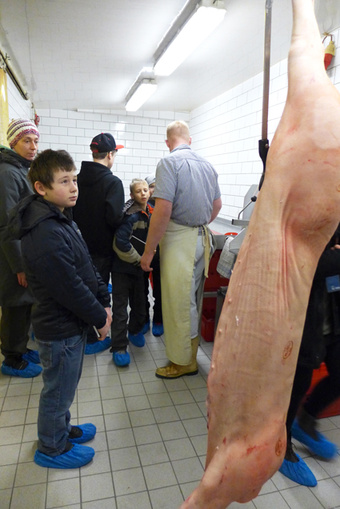
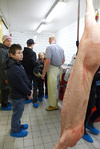
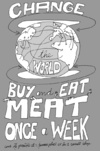
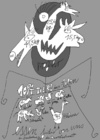
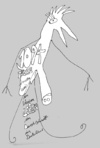














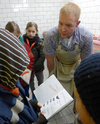












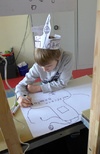
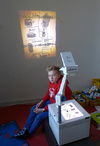







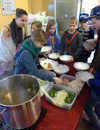






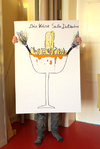







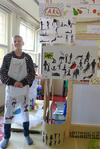






Theater an der Parkaue in Lichtenberg/ Berlin
Winterakademie vom 3. bis 8.Februar 2014
mehr info hier auf der webseite der Parkaue
DIALog - FORderungen - klarTEXT - disPLAY - konzeptWERKstatt (2014) +
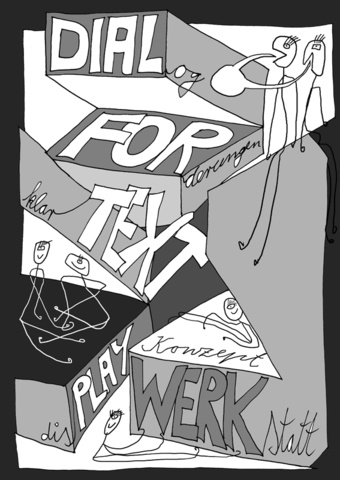
Haben und Brauchen zu Gast in Ex Rotaprint / Berlin
Haben und Brauchen diskutiert ein Wochenende.
Zu ICH, um WIR zu sein? (2014) +
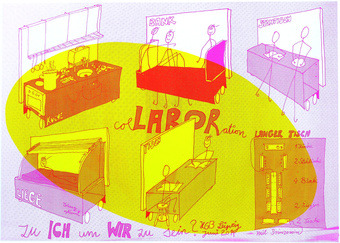

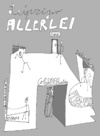
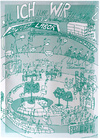





















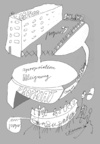

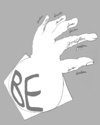
Experiments in collectivity
Hochschule für Grafik und Buchkunst / Leipzig
With: Stephanie Nava (F), Olivia Plender (GB), Meggie Schneider (D), Alexander Römer (constructLab und EXYZT F/D), Erik Göngrich (D), Thomas Rustemeyer (D)
When: 1st to 15th June 2014
Where: In and around the gallery space of the Art Academy Leipzig
It is always about the result.
About the perfect space, the freshly painted white walls, the right position of the artwork, the discreetly hidden cable.
All the effort is focused on the moment of the opening. The act of questioning the works in the space, the try-out, the rejecting, replacing, and changing is of no or very little interest and should ideally leave no traces. The conditions of the artistic process seem to play no role.
Leading questions - What happens:
When the process of producing and questioning becomes relevant?
When not the result but the process is the pivotal point?
When collective creating is put forward instead of presentation?
When artists get the time and the means to indulge into a 2-weeks lab situation to broach the issue of collaborative work?
Blinder Fleck (2014) +
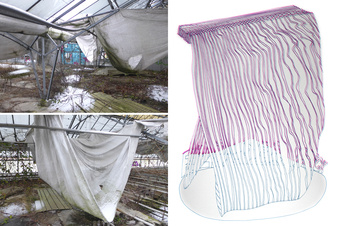
Lichtenberg-Studios, Berlin, Februar 2014
Zeichnung, Fotografie, Vorhang und
Publikation hier (600KB)
"Winterurlaub" - Januar 2014 in Lichtenberg
von Erik Göngrich und Yves Mettler
SUPER-STUDIO (2014) +
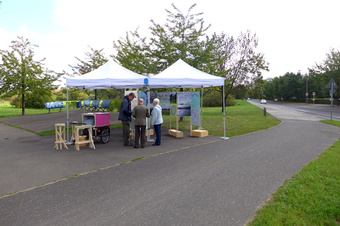









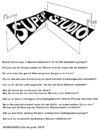
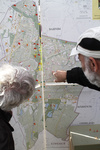

IGA 2017, Marzahn/Hellersdorf, Berlin
SUPER-STUDIO - Fahrradanhänger mit Ausstellungsdisplay und Postkarten-Edition wird präsentiert:
AM Samstag 27.9.2014
VON 12:00 bis 19:00 Uhr
AN der Eisenacher Straße/Marzahn/Berlin im Wiesenpark direkt gegenüber des Haupteingangs der "Gärten der Welt".
GAST: Todosch Schlopsnies
SUPER-STUDIO von Erik Göngrich ist Teil des kuratierten Kunstverfahrens für die IGA Berlin 2017.
Das Kunstverfahren der IGA Berlin 2017 widmet sich dem kuratorischen Leitmotiv SICHTEN EINER LANDSCHAFT: WIE FORMULIERT SICH STADT AN IHREN RÄNDERN? und zeigt zehn Positionen international renommierter Künstlerinnen und Künstler, die sich auf ihre ganz eigene Weise den globalen und lokalen Themen der Internationalen Gartenausstellung widmen. Während der IGA-Herbsttour 2014 präsentiert der Berliner Künstler Erik Göngrich in seinem SUPER-STUDIO, stellvertretend für die Zehn, erste künstlerische Recherchen und lädt Sie ein das Kunstprogramm mitzugestalten.
Katja Aßmann / Kuratorin des Kunstverfahrens
SAG MIR, WAS DU SIEHST und ich erzähle Dir, was du isst. (2014) +
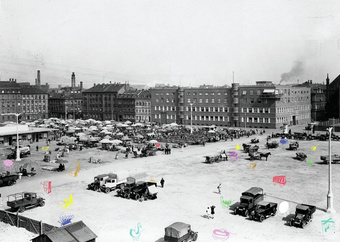














Wilhelm Hack Museum - Ludwigshafen
Fahrradtour am Freitag 7.November 2014, 15-17:30 Uhr
Treffpunkt: Eingang Wilhelm Hack Museum, Berliner Straße
Erik Göngrich und Ece Pazarbası möchten Sie zu einer Überraschungs-Fahrradanhänger-Tour zu den unterforderten weil kaum genutzten öffentlichen Räumen Ludwigshafens einladen. Während der zweistündigen Fahrt werden wir die versteckten Schönheiten Ihrer Stadt erkunden. Wir werden Geschichten essen und Zeichnungen hören, die Vergangenheit, Gegenwart
und Zukunft Ihrer Stadt verhandeln. Die Fahrradtour startet mit der „schönsten Skulptur“ Ludwigshafens und endet mit einem Fünfuhrtee an unserer mobilen Bar, an der wir mit Ihnen gerne zu folgenden Fragen ins Gespräch kommen würden:
Welcher Ort ist für Sie persönlich eine versteckte Schönheit in Ludwigshafen? Welcher hat Potenzial für zukünftige Transformationen Wenn Sie an einer aktiven Rolle im Veränderungsprozess Ihrer Stadt interessiert wären, was wären Ihre persönlichen Werkzeuge, diesen zu gestalten? Gibt es einen Fahrradanhänger, den Sie gerne für das zukünftige Ludwigshafen gestalten würden?
Projekt in Kollaboration mit Ece Pazarbasi
La creatividad está aqui - BIOtechnologyCUB (2014) +
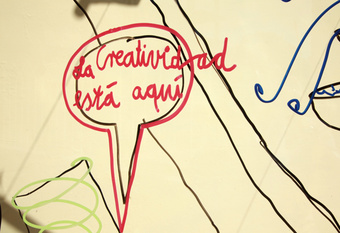













La creatividad está aqui
From BIOCUB to BIOtechnologyCUB - part 01/14 - Havana/Cuba, November/December 2014
After BIOCUB, a fruit-dryer that was installed 2012 in the homes of 20 families, I worked again together with Aurelie Sampeur (LASA-Laboratorio artistico de San Agustin) and Catherine Sicot (curator working with LASA) on a film that dealt with the question of science and creativity in a Biotechnological Laboratory in La Playa/Havana.
BIOCUB -2012 explored how a single person or a whole family can live from drying fruits. The project dealt with in the creative use of natural products and solar-energy. It was interested in saving electricity by drying fruits and questioning how that work could be a small business?
BIOtechnologyCUB is describing how the creativity of a few BIOtechnology scientists is developing important medication that is vitally important for the CUBan society.
The title "La creatividad está aqui - Creativity is here" is pointing out that there is already a huge creativity in the neighborhood of San Agustin and La Playa (both are situated on the peripheral border of West-Havana). This public creativity could be seen as an artistic intervention in the public in general. The film -made by Aurelie Sampeur- with interviews of several scientists is questioning this creativity. Most of the scientists live just opposite the laboratory-buildings in a housing project that was build the same time. These buildings and the public space surrounding them will be renovated by LASA in the next years (project of the artist Candelario).
In the middle of this housing project Erik Göngrich was drawing on a huge glass (2 x 4 meter). The drawing commented the actual public situation, reacted on the scientist’s interviews and played with its future transformation.
These drawings are part of the 18 minutes long film „ La creatividad está aqui“.
The film was presented during the "Nuit Blanche" weekend in Dec. 2014 in Havana/Cuba. It will be presented in the next Havana Biennale in spring 2015.
more info about BIOCUB here and
on this web-page in exhibitions 2012
information about the filmscreening: La creatividad está aqui
Diese Ausstellung wurde ermöglicht durch die Unterstützung der IFA, dafür möchte ich an dieser Stelle danken.
ICH BAUE AUCH (2013) +
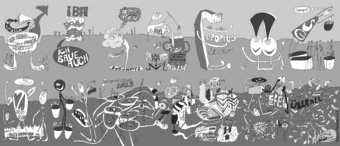
Gropiusstadt / Berlin
Zeichnerische Zusammenfassung des Perspektivwerkstatt-Workshops am 3.Mai 2013 in der Gropiusstadt/Berlin.
MARX-ENGELS-JA (2013) +
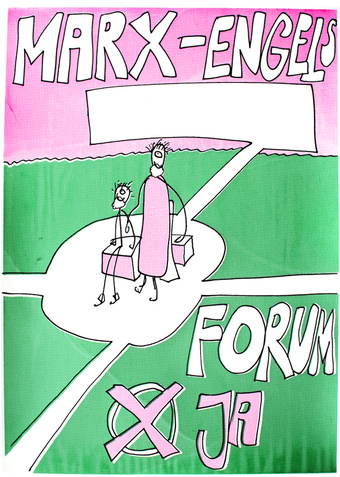
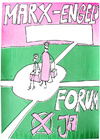
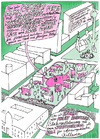
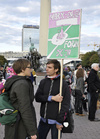


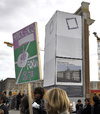
MARX-ENGELS-JA - Berlin
Was wir BRAUCHEN:
Marx-Engels-Forum mit Produktionswerkstätten. Ausstellungspavillons, Gruppen-Residency-Studios, offene Küchen-Häuser, lange Tafeln, Lese- und Musik-Boxen/Türme frei flottierend zwischen Bäumen, gebaut aus Stroh und flüssigem Holz...
Neptunbrunnen, Fernsehturm und St.Marienkirche BLEIBEN wie sie sind!
Was wir HABEN aber NICHT BRAUCHEN:
Blockrandbebauung mit einem Stadtschloss als Hülle für außereuropäische Kulturen!
SUPERstadtCITY-Lecture-Performance (2013) +
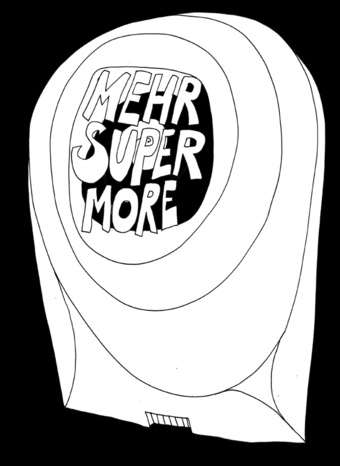
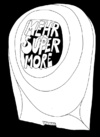
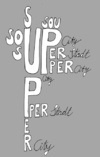

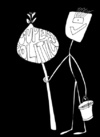
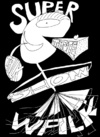
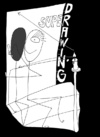

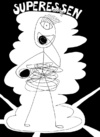
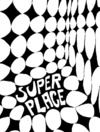




SUPER Sculpture
SUPER Studio and Labor
SUPER Research
SUPER
SUPER Drawing
SUPER Documentry/Interview/Comic
SUPER
SUPER BAR
SUPER
SUPER Kitchen
SUPER Food
SUPER Essen
SUPER
SUPER Walk/Talk/Show/Taste
SUPER Presence/Absence
SUPER
SUPER Work-Production-Honorarium
SUPER Politics
SUPER Place
SUPER
SUPERstadtCITY
SUPER hiSTORY-Image and Text Archive
SUPER
SUPER SCREEN
SUPER Pleasure-Fun-Joy
SUPER School-Stage-Shop
What if? SUPERSTADT!
What is not shown...! (2013) +
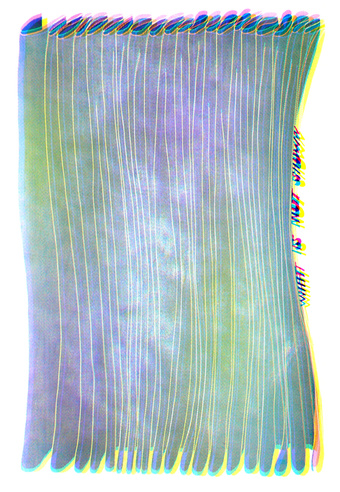
Berlin
Silk-screen-print, 70x100cm
GROPIUS_BAR (2012) +
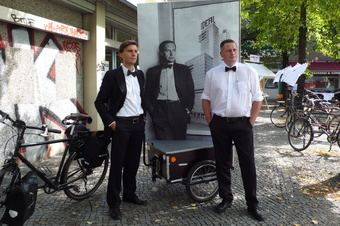



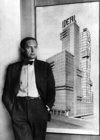
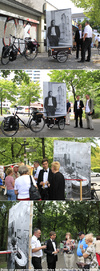
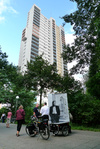

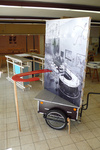






Gropiusstadt / Berlin
In einer mobilen Bar luden zwei Walter Gropiuse alle um 1962 Geborenen ein, auf die gleichaltrige Gropiusstadt anzustoßen.
Die BAR war zum 50 jährigen Jubiläum der Gropiusstadt am Samstag den 25. August 2012 auf dem Wildmeisterdamm,zwischen Bat-Yam-Platz und IDEAL-Hochhaus unterwegs.
Auf was möchten Sie in Gropiusstadt anstoßen?Was wurde von Walter Gropius in Gropiusstadt gebaut? Was würden Sie gerne mit Walter weiterentwickeln? Haben Sie eine Lieblingsskulptur in Gropiusstadt? Wie ideal ist das IDEAL-Hochhaus wirklich?
Anstoßen mit Gropius entsteht für die Experimentellen Urbanen Landschaften im Rahmen des Jubiläums „50 Jahre Gropiusstadt“. Infos hier
Die Experimentellen Urbanen Landschaften werden kuratiert von Katharina Rohde. Webseite Katharina Rohde
Red Rose and Black Square - THE NUDE SCULPTURE CASE - Participation? Collaboration! (2012) +
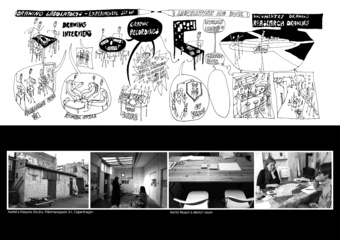

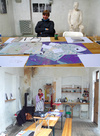













Koppenhagen / Denmark
Astrid Noacks Atelier and Neighbourhood Specialists
From September to November 2012 I visited Astrid Noack’s Atelier in Copenhagen three times. Each time I brought a specialist from Berlin for a one-week stay. Together we will experienced the role of ANA in the neighbourhood, explore Nørrebro, the artistic and the public space, meet local residents and invite the public to events with presentations, walks and discussions.
More Information is on the Astrid Noack web-site
Curator of the ANA residency: Marie Bruun Yde
September 17 – 24, 2012
Red Rose and Black Square - Graphic recordings
with curator/art historian Cora Hegewald
How can real space be translated to documentary drawing and merged with fiction? What is the difference between documentary drawing-text-practices and graphic novels? What kind of research and interaction with a place is possible within short time? You can see a first result here:
.pdf with 2,3MB resulution
October 22 – 29, 2012
The nude sculpture case with Michael Schultze
"Sandberg: May I ask one question: why isn’t the working class coming here? This cemetery is for free. It costs nothing. It could be a place for recreation. So why don’t they come? I am going to tell you: the working class has got money now, they spend it on going to the beaches, drinks and football games, whatever. I tell you: in between the professors and the working class we now have Google. Nobody asks questions anymore. That is how we lost our innocence."
Within the historic studio situation of Astrid Noack the two artists Erik Göngrich and Michael Schultze investigate notions of the disappearance of the figurative in sculpture, bigness, fiction and document. Four books, three bottles of wine and 10 kg of clay were brought to the studio. Stories and materials in the neighbourhood were collected to create objects dealing with the specific situation and context of ANA. Somewhere between the facticity of things and the representation of them the artists take us into the private, public, functional and phantasmatic world of Astrid Noack’s studio.
November 19 – 25, 2012
Participation? Collaboration! with Mathias Heyden
For his third residency week at the former studio of Astrid Noack the artist Erik Göngrich has invited the architect and activist Mathias Heyden to explore the space, its neighborhood, Nørrebro, and Copenhagen. Thinking while wandering is central. Matters of participation and collaboration and related thoughts about Berlin's and Copenhagen's city development are discussed. Texts, drawings and photographs are emerging. Join their walking tour and share your understanding of planning, building, art, and life. And if you like, stay for soup and bread afterwards in the studio.
PARCeque, Marseille (2012) +
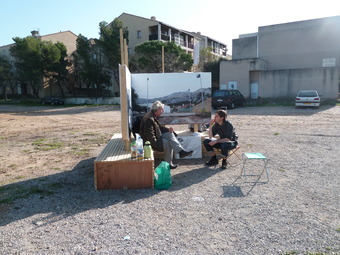















PARCEQUE un projet de Stefan Shankland, Erik Göngrich, Boris Sieverts et Benjamin Foerster-Baldenius / raumlaborberlin
réalisé dans le cadre du programme «Quartiers Créatifs» porté par Marseille-Provence 2013
PARCeque 2012 was a year of research and action in Haut de Mazargues in Marseille the final presentation will happen from 7.-16. june 2013
plus d' information: www.parc-mp2013.blogspot.com
PARCEQUE publication (pdf 10MB) here
PARCeque est un parcours à travers d’anciennes propriétés bastidaires, des cités d’habitat social, des pinèdes, des ensembles résidentiels clos, des terrains vagues, des zones d’activités, des traces de voitures calcinées et des falaises blanches.
PARCeque est un inventaire de paysages, d’architectures, de sculptures volontaires et involontaires, d’objets et d’histoires locales.
PARCeque est une recherche conduite par un groupe d’artistes qui vous invitent à les rejoindre pour explorer, expérimenter, imaginer
et activer PARC.
PARCeque est une utopie pour un territoire en mutation.
presence-absence-monument (2012) +
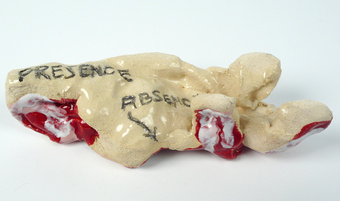
Video from Michael Schultze
Kopenhagen/Berlin 2012/2013
Duration: 2min
The world is not fair (2012) +
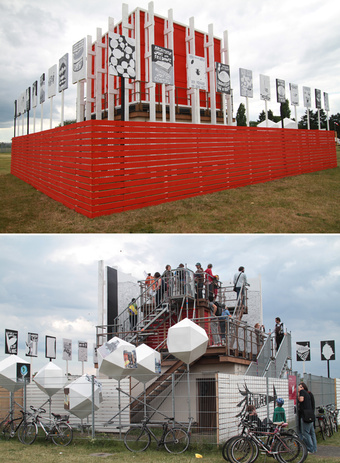
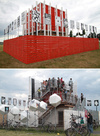



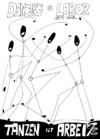
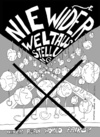
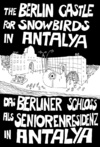
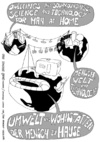
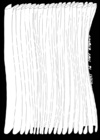
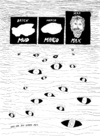
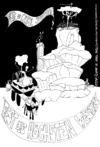
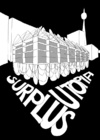
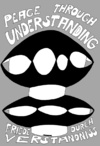
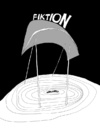
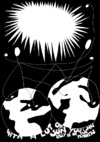
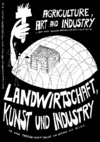
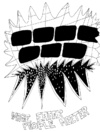
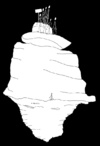
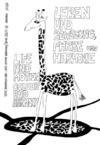
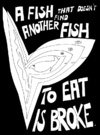
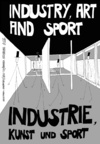
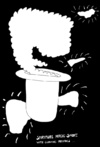
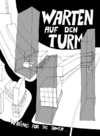
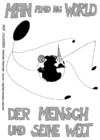
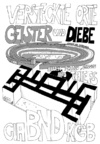
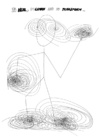
Weltausstellung - Tempelhof / Berlin
38 drawings 70x100cm on 19 wooden frames mounted from both sides and standing on a wooden stick.
These 19 mobile billboards I use in diffrent installations.
Haben und Brauchen (2011) +
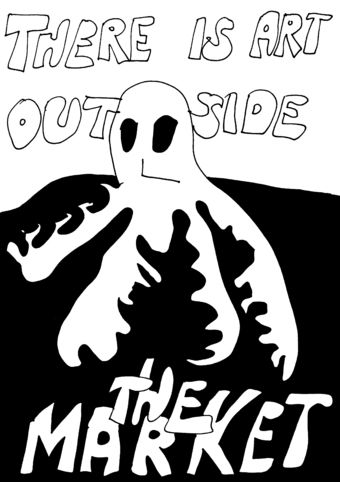
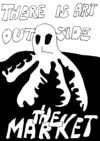

everybody should know about this manifest:
http://www.habenundbrauchen.de/en/
jeder sollte dieses manifest kennen:
http://www.habenundbrauchen.de/
Musée de ... / Museum of... (2011) +
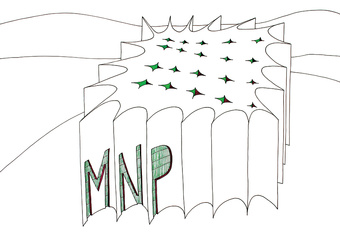














Cajarc/Frankreich und Tiergarten/Berlin
MNP - Musée des Noix et des Pommes
MCF - Musée du Cochon et du Fromage
MBCV - Musée des Bars et du 2CV
MPTPP - Musée des Pommes de Terre et des Petit-Pois
MCAB - Musée des Cavernes et d’André Breton
MPO - Musée des Poissons et des Oeufs
MW+MB - Musée du Week-end et des Boules
MBS - Musée des balcons et des scènes
MDC - Musée des distances et des châteaux
MTES - Musée de la Tour Eiffel et du Sablier
MVE - Musée des Vaches et des Escargots
MPV - Musée de la Piscine et du Vin
MVP - Musée de la Vue et de la Poire
MCC - Musée du Canard et du Chapeau
MFP - Musée de la Fraise et de la Patrimoine
MDB - Museum of Dog Kennels and Birdcages
MBM - Museum of Berlin Mayors
MKC - Museum of Kitchens and Crossroads
MSP - Museum of Sitting Rooms and Parks
MPF - Museum of Pistols and Bottles
14+ Watercoulours, size: 76 x 56 cm, some framed
The Beginning of the Missunderstanding / Architecture or Rain (2011) +
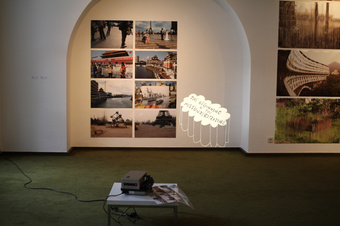



The Beginning of the Missunderstanding : Acht Fotografien (40x60cm) und eine Diaprojektion
Architecture or Rain: 16 vom Regen verwaschene Fotografien (70x100cm)
STUDIOLO, Berlin, Paris, Brest, Cajarc, Rosenheim (2010) +
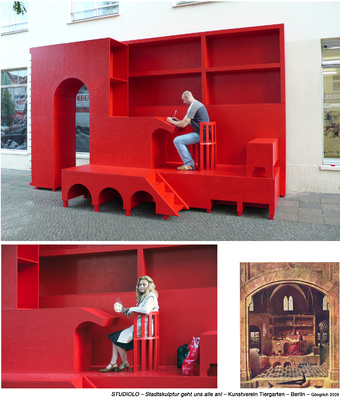
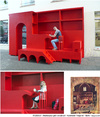

The privilege of having a study space was one that was long only available to men, as was intellectual activity in general. As a result of her position in society, Isabella d’Este in Mantua represented an exception to the rule in the late fifteenth century. Isolated study became acceptable for women from the eighteenth century onwards, as the position of women in society became stronger and their aesthetic, intellectual and erotic powers received more recognition. As a result, intellectual activity was considerably influenced by women, who encouraged it in communal salon rooms. (Cora Hegewald)
One image that has always been important to me is a very small Renaissance painting (45.7 • 36.2 cm)— St Jerome in his Study, german title: Der heilige Hieronymus im Gehäus, around 1475– by Antonello da Mes sina (active around 1456, died in 1479). I often took a postcard of it, which I bought in the National Gallery of London in 1994, with me when I travelled around. I prefer the poetic German version of the title: Heiliger Hieronymus im Gehäuse (literally Holy Jerome in His Cabinet). In this painting, we see St Jerome sitting on a wooden platform with a table, a bench and shelves. All of the elements are organised to create a little room for his studies — a studiolo. This wooden room looks like a freestanding object in a much bigger Gothic space that could be a palace or a church. The whole studiolo as a sculpture appears to be presented like a window display. One looks from a bright sunny outside through an opening without doors into a darker inside (space); it almost feels like looking into a glass cabinet. (Erik Göngrich)
The Studiolo Sculpture was exhibited with: Kunstverein Tiergarten, Berlin 2009; Atelier/TRANS305, Paris 2010; centre d'art paserelle, Brest 2010/11; Centre d'art contemporain Georges Pompidou, Cajarc 2011 and sims-gallery, Rosenheim 2011
BANNKREIS (1994) +
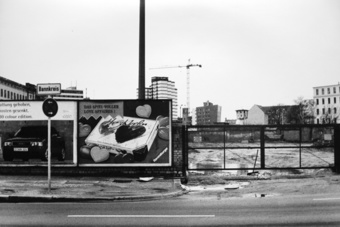




























BANNKREIS - 28 Fotografien der Bannkreis-Schilder um den Berliner Landtag.
Bis zum Baubeginn des Potsdamer Platzes gab es einen durch Schilder markierten Bannkreis um den Berliner Landtag. Entlang der Leipziger Straße, Wilhelmstraße, Anhalter Straße und Stresemannstraße standen um den Landtag ca. dreißig 30 x 50cm große Schilder, die diesen aus der Versammlungsfreiheit herausgenommenen Bereich markierten.
Landsberger Allee - Reichstag - Kudamm-Eck - Lindencorso (1993) +
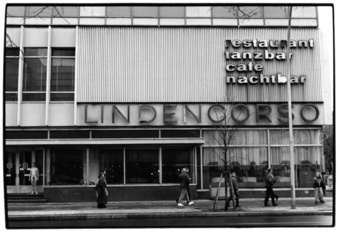












Berlin 1993-2015
Vor langer Zeit machte ich diese Fotos mit Jan Liesegang. Wahrscheinlich als Reaktion auf die schnelle Veränderung der Stadt. Sicher auch um die eigene Masstäblichkeit zu finden. Die großen Straßen sind wahrscheinlich noch da aber viele Gebäude verschwunden. Oder wer erinnert sich noch an das Lindencorso? Die Idee von Stadt als Gemeinschaft in Restaurants, Tanzbars, Cafes und Nachtbars und auf öffentlichen Plätzen. Seit Mitte der 90er muss man an dieser Ecke Autos in Schaufenstern anschauen...
(Notizen Feb 2014)
An den Fotos lässt sich auch die schnelle Eventisierung der Stadt ablesen. Während man nackt auf der westseite des Brandenburger Tores oder vor dem Reichstag noch das Gefühl hatte 1993 eine aktuelle (stadt-) geschichtliche Situation adäquat zu kommetieren wird heute die gleiche Situation von nackten Barbie-Puppen ähnlichen Frauen mit Silikon-Busen für pornografische Fotografien genutzt.
Öffentlicher Raum als Verkaufsraum vom eigenen Körper, über die Fan-Meile bis zum neusten Batman Film...
Hmm...nostalgisch?
Eher den aktuellen öffentlichen Raum befragend: was ist in ihm noch möglich? worin unterscheidet sich eine künstlerische Aktion von einer komerziellen Nutzung? Wann wird Kunst zu einer politischen oder sozialen Aktion? und bekommt eine Relevanz und wann ist sie dekorativer Event? - der heutzutage durchaus auch kritisch sein kann, da muss man denke ich genauer schauen.
Wie würden zeichnerische und fotografische Reaktionen auf diesen Raum aussehen? wie kann man eine Ausstellung im Öffentlichen organisieren/machen/mobilisieren?
(Notizen Jan 2015)